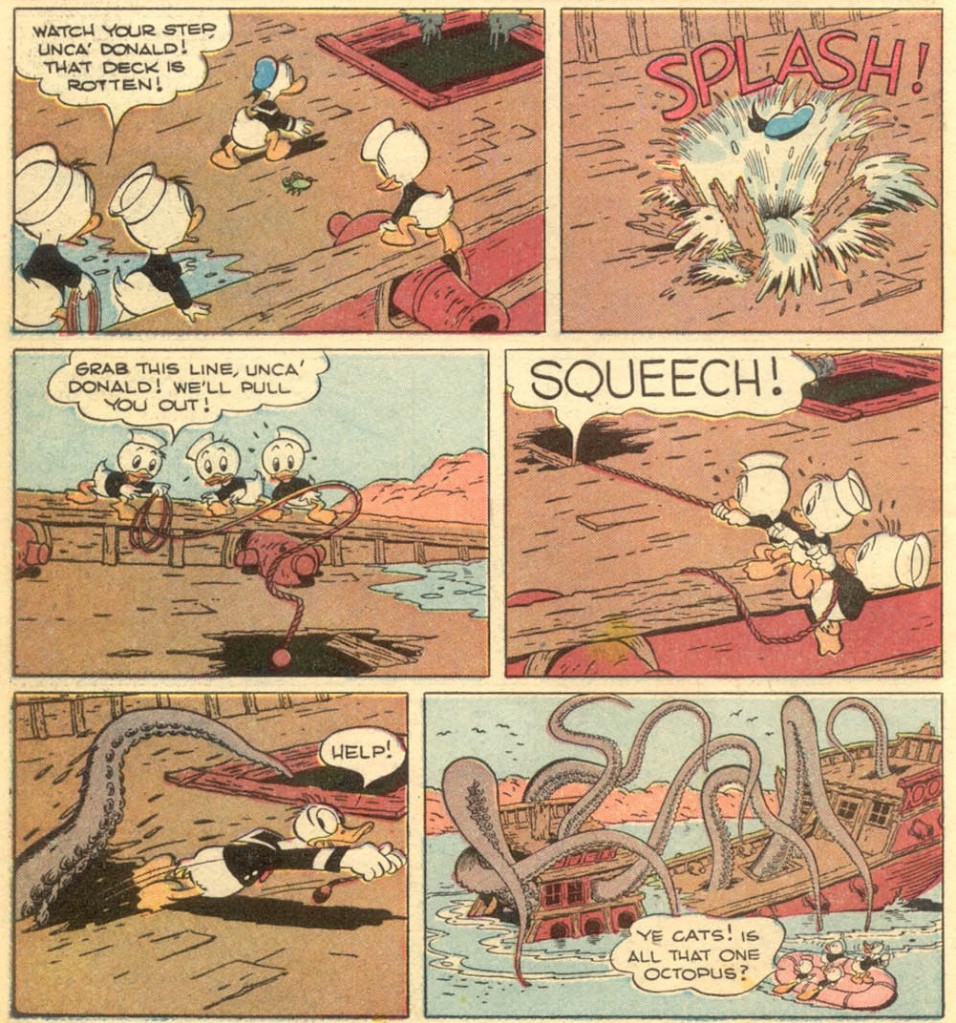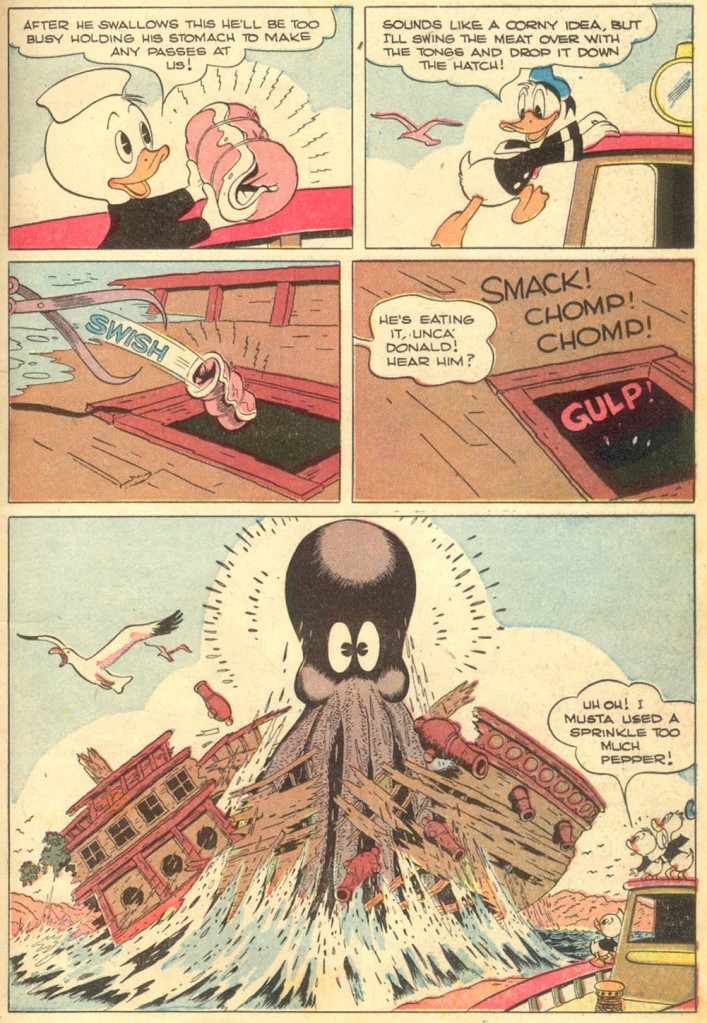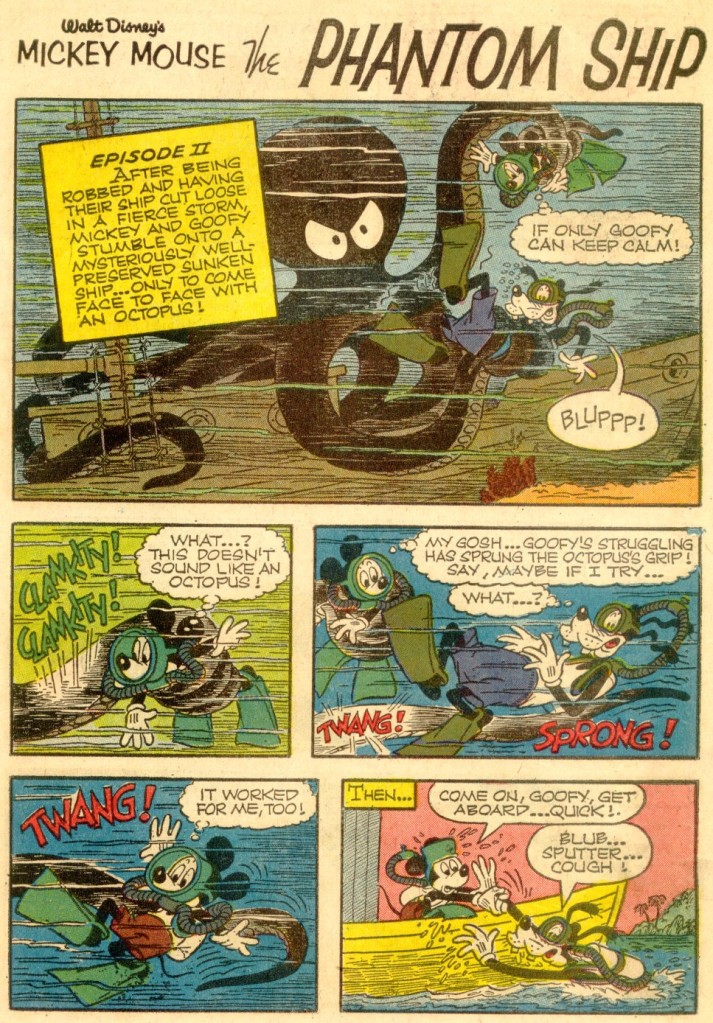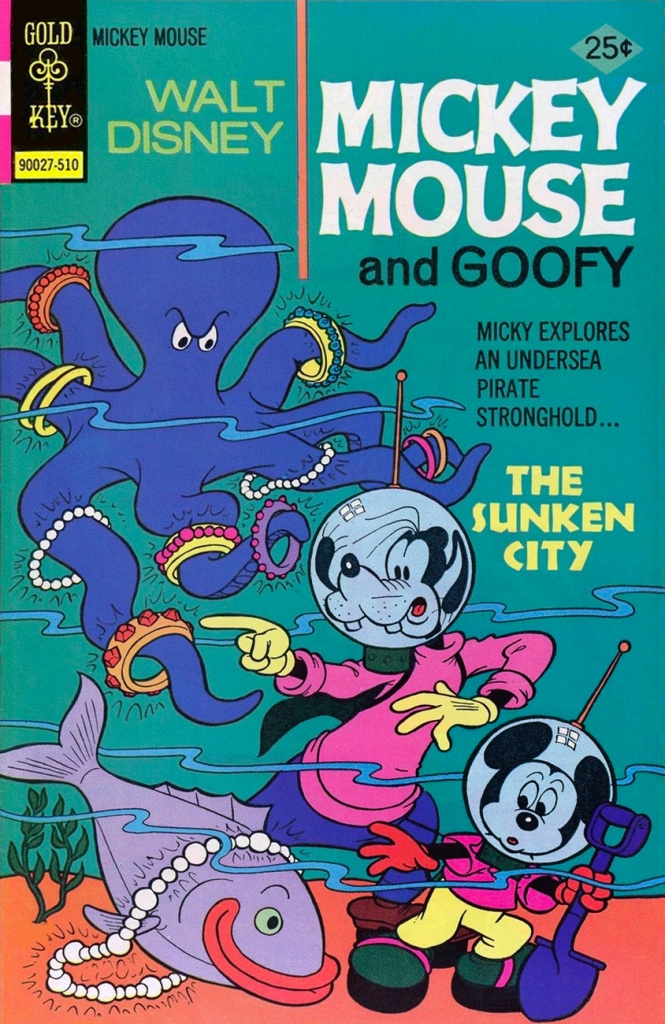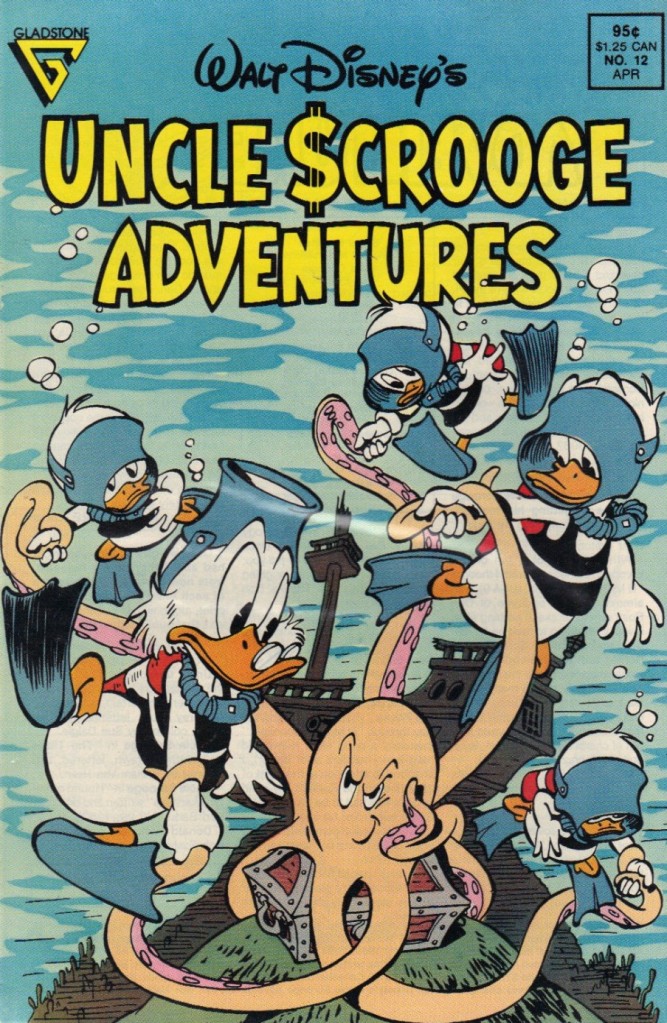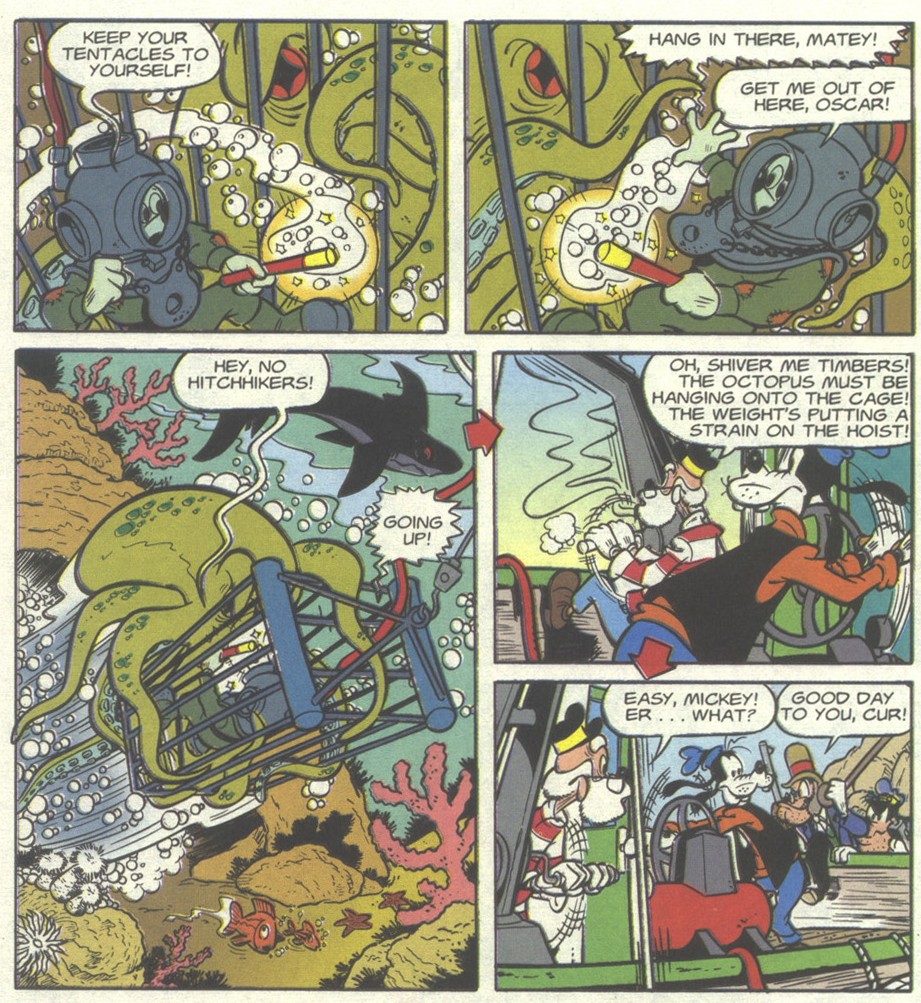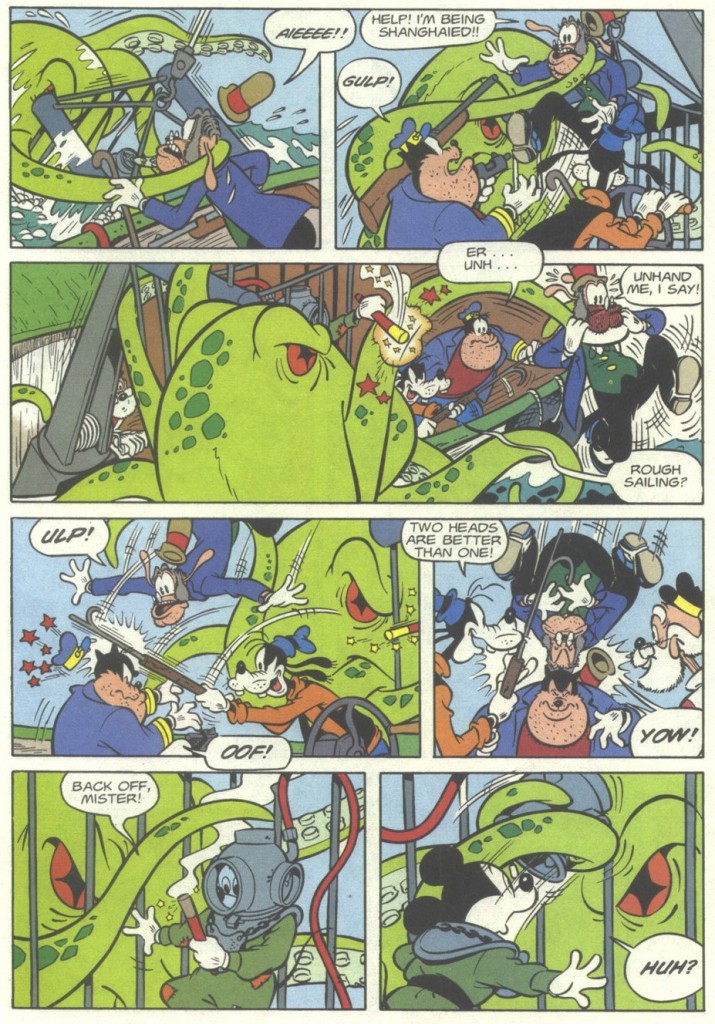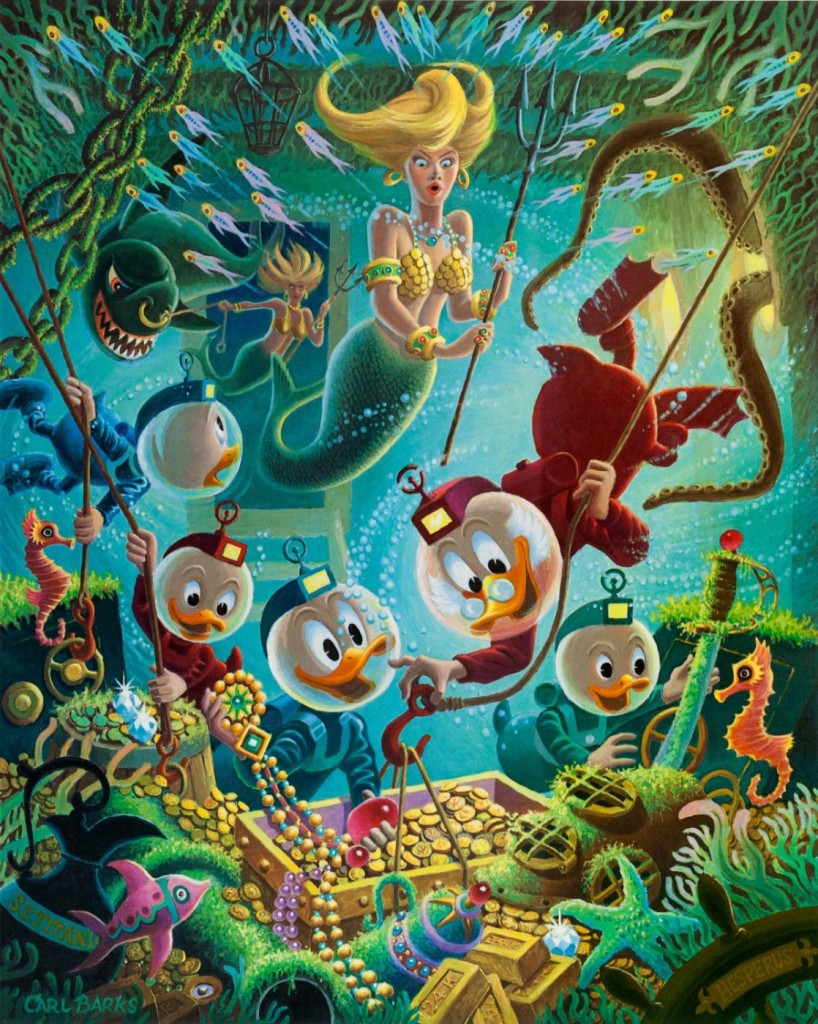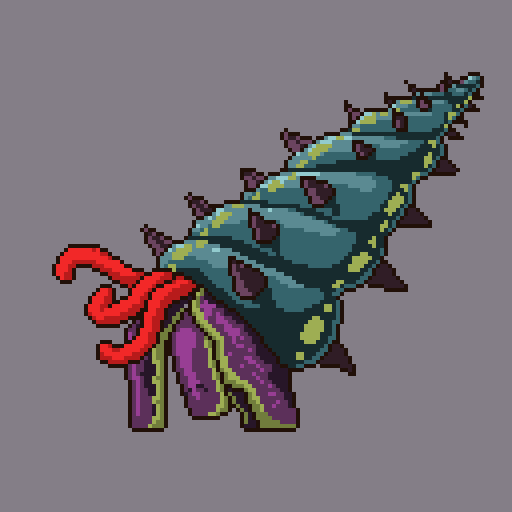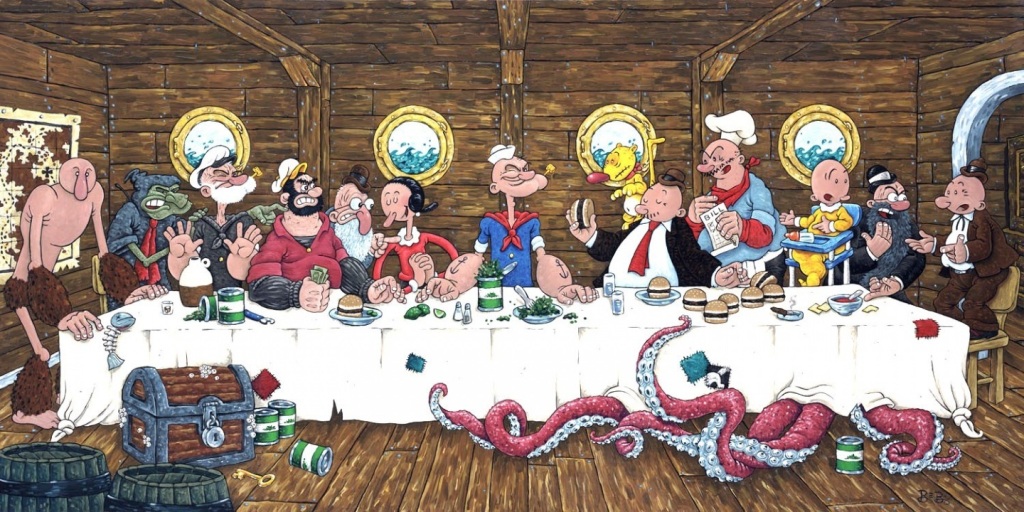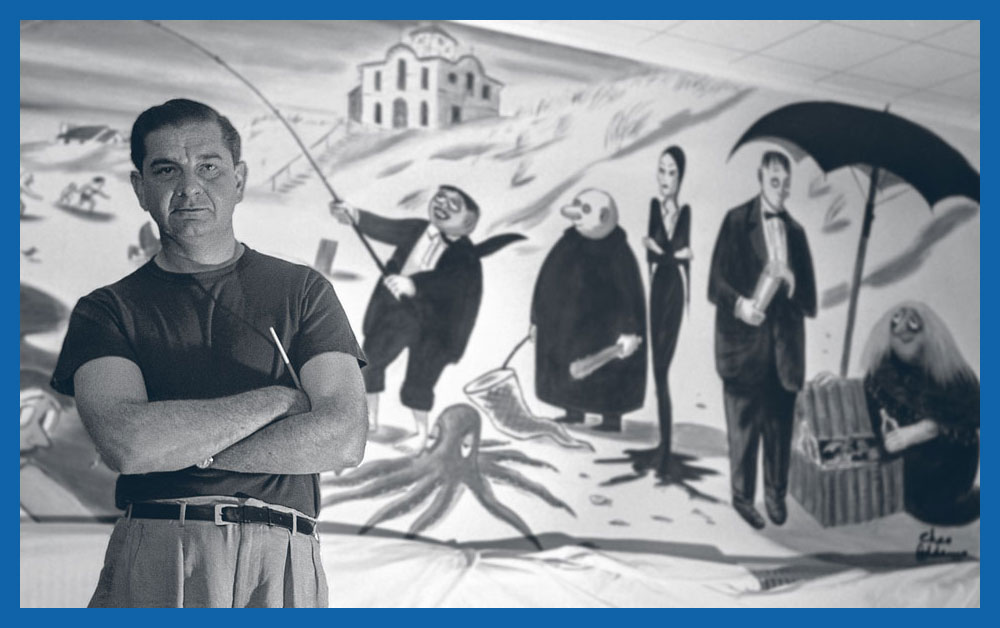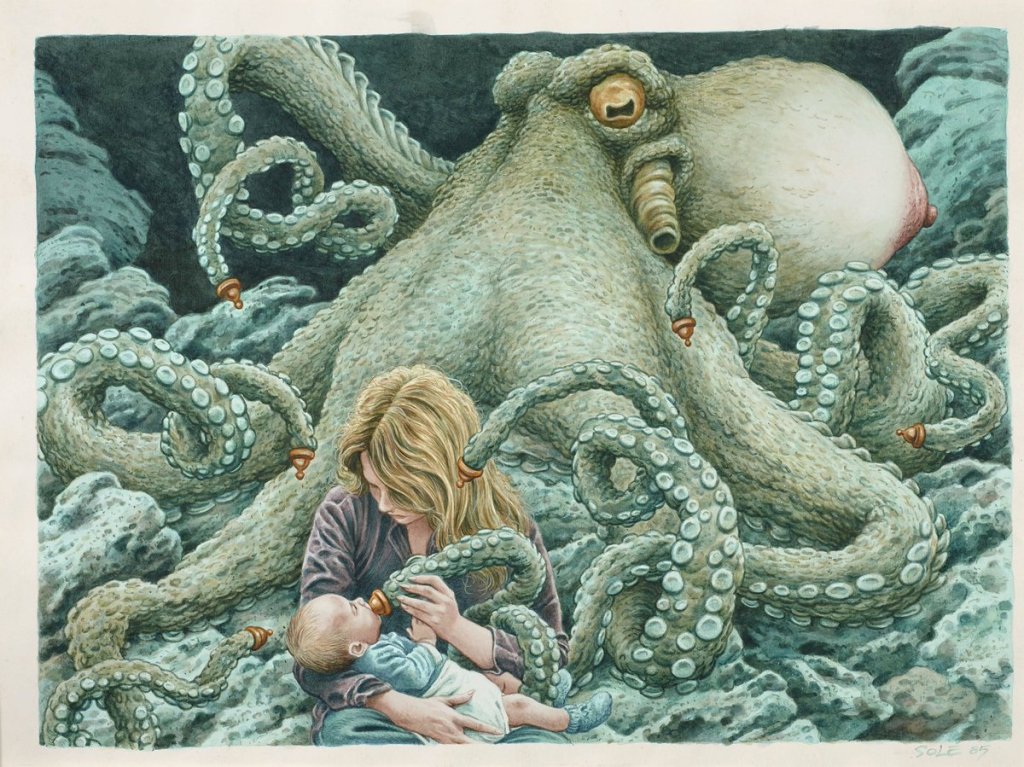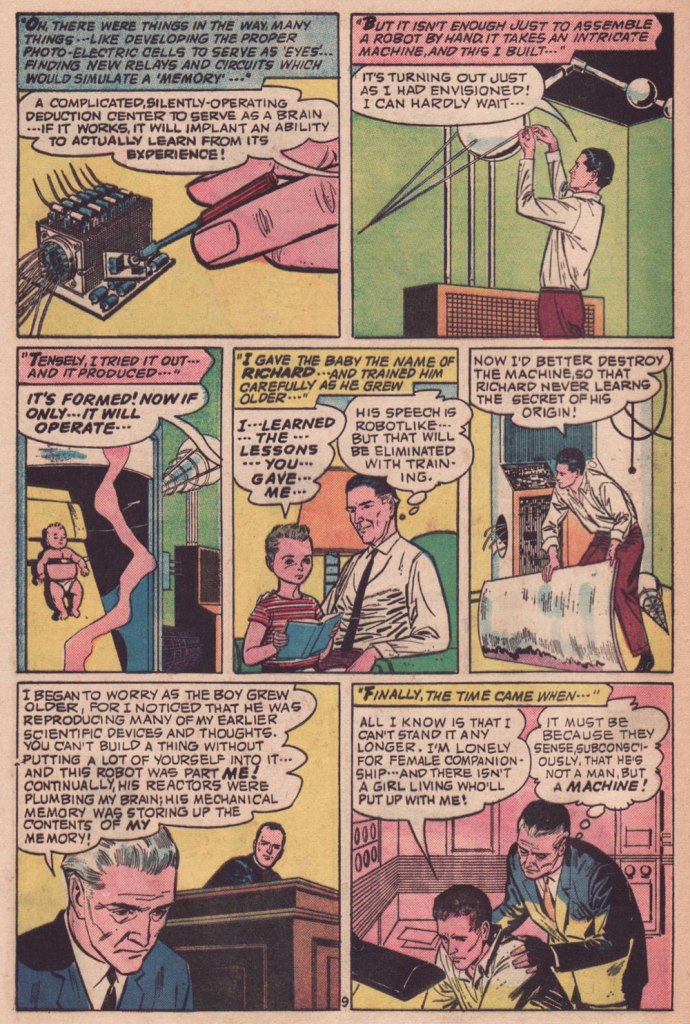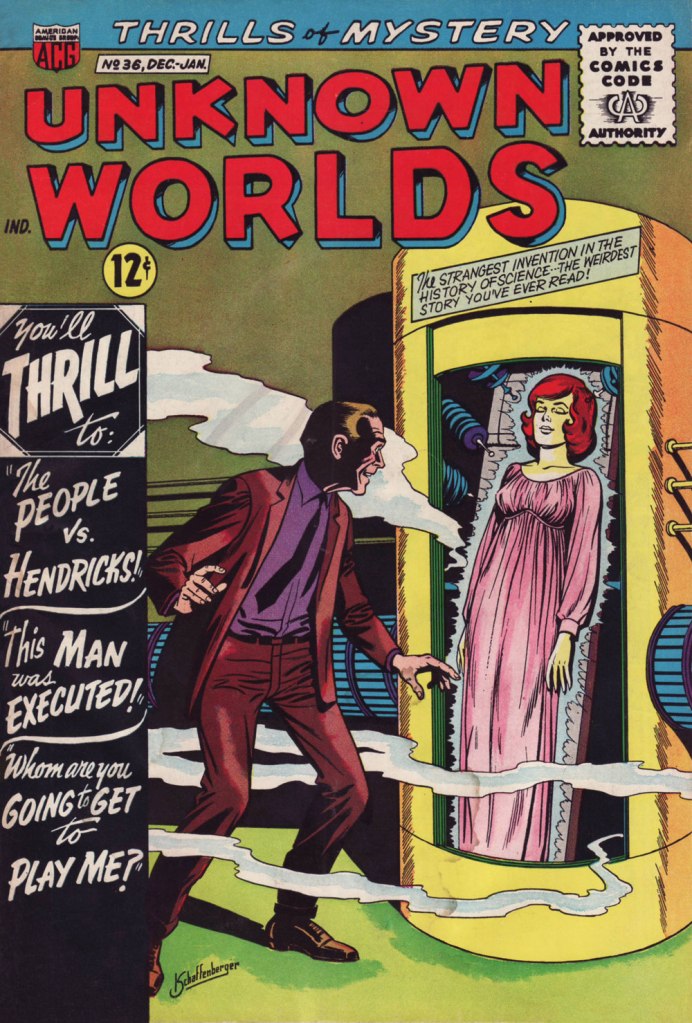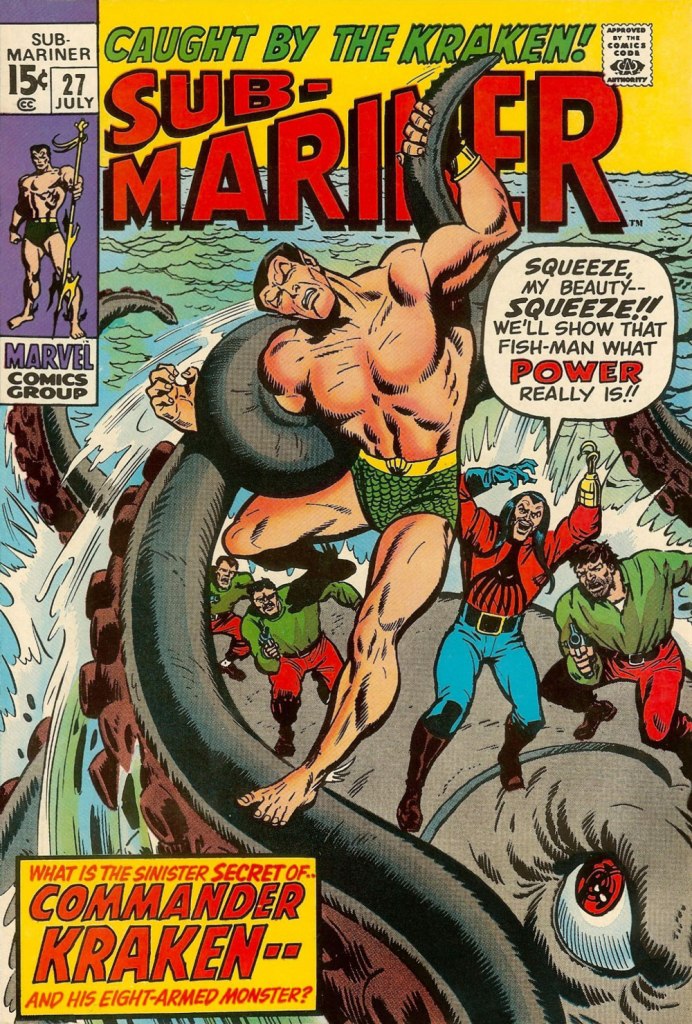Today we play a game: yes, those long slithery things are wrapped around somebody’s ankle… but are they tentacles, or worms?
In real life, worms (even predatory) don’t really wind around their prey or suffocate them. A biologist could tell us whether they ever ‘hunt’ in huge numbers, but I think we can be fairly certain that the scenes depicted below have never happened in real life. If disbelief must be suspended, I’d rather string it up for a cephalopod invasion, rather than a worm onslaught (ick)… But the characters of this post have had to deal with both kinds of threat. Let’s get on to it!
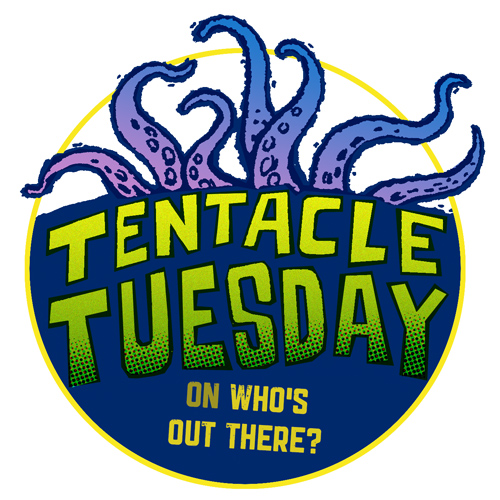
Worm or tentacle? Well, these have eyes at the end of… of whatever it is… and they seem like individuals, so probably worm. Hey, those who have read this issue before, no spoilers, please!
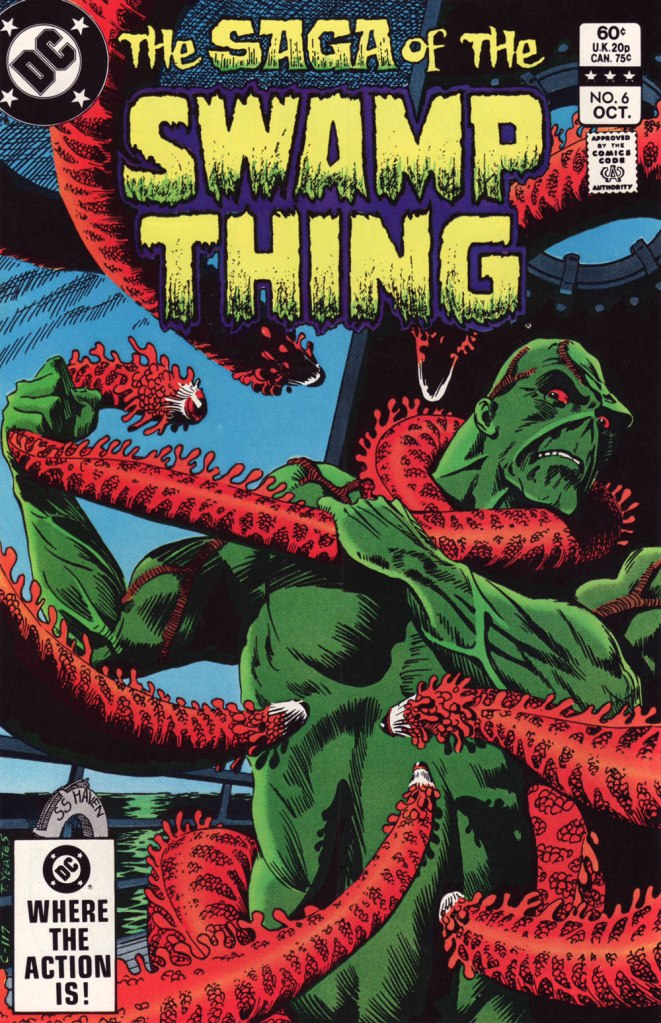
Let take a look inside this issue…
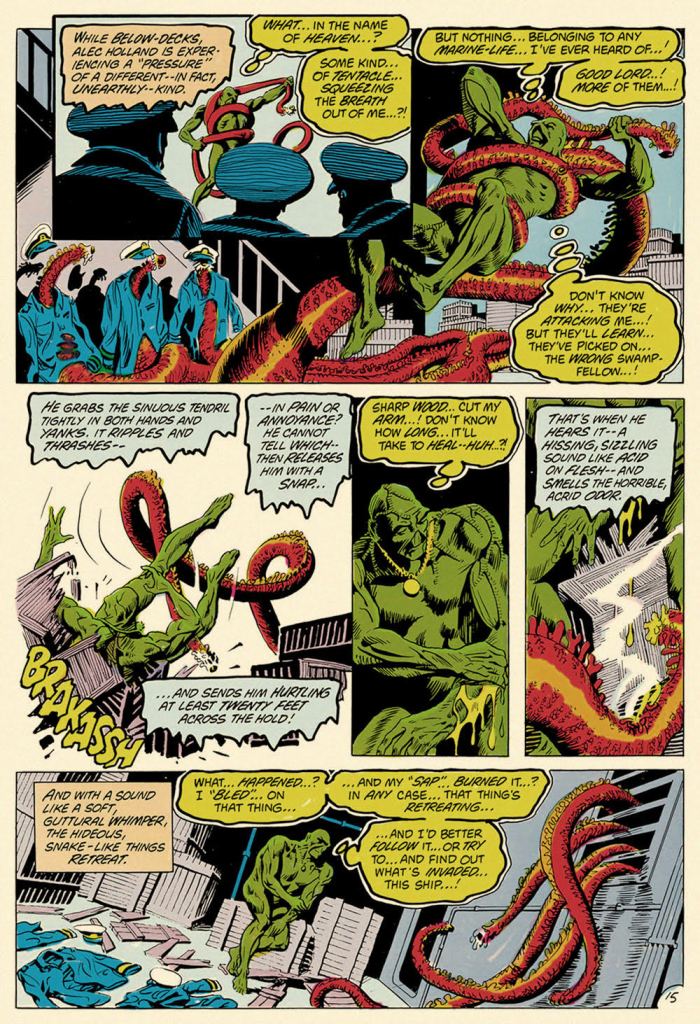
What do you think? These seem to originate from the same source. Let’s peek at the next issue – cephalopod confirmed!
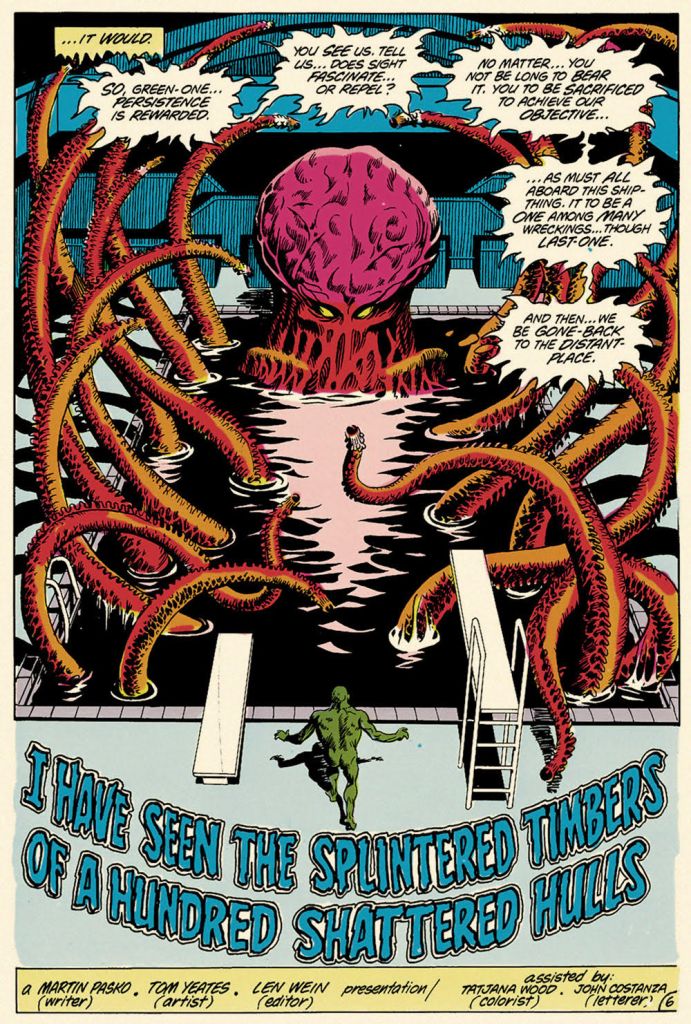
Moving on to our next puzzle! Those are surely tentacles, belonging to some cephalopod monstrosity with a thousand arms:
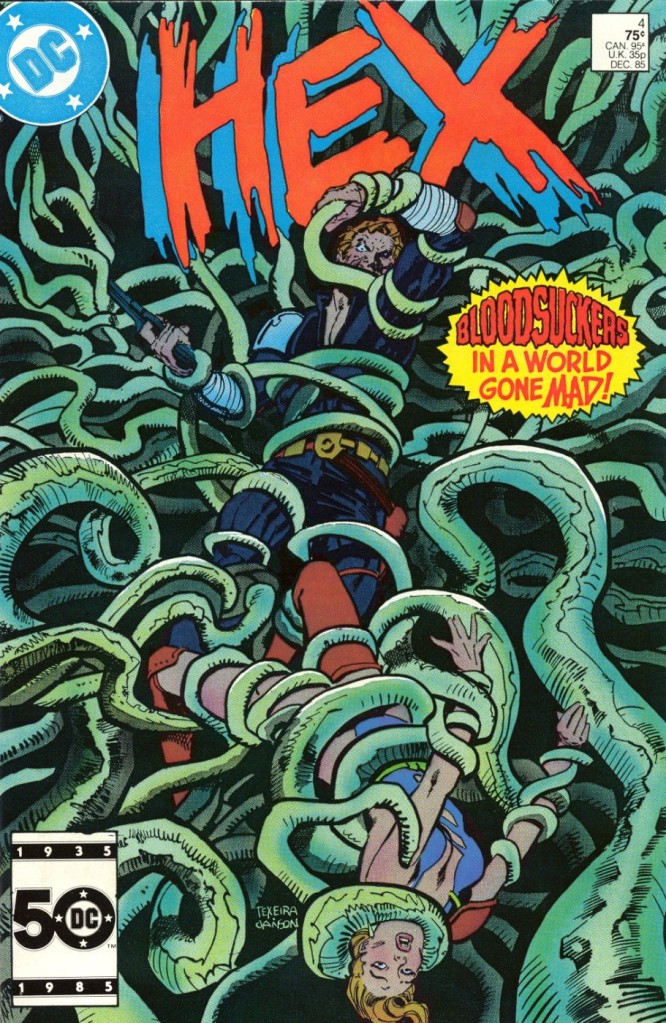
And yet… the cover story is Worms, scripted by Michael Fleisher, pencilled by Ron Wagner and inked by Carlos Garzón. I stand corrected!
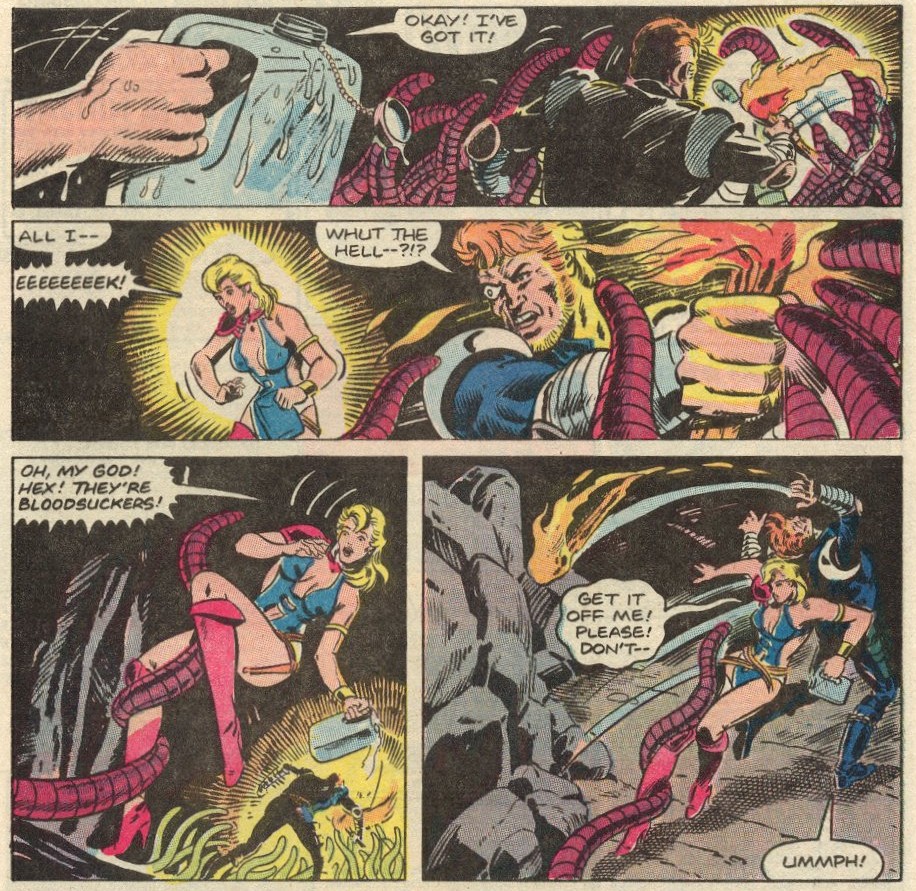
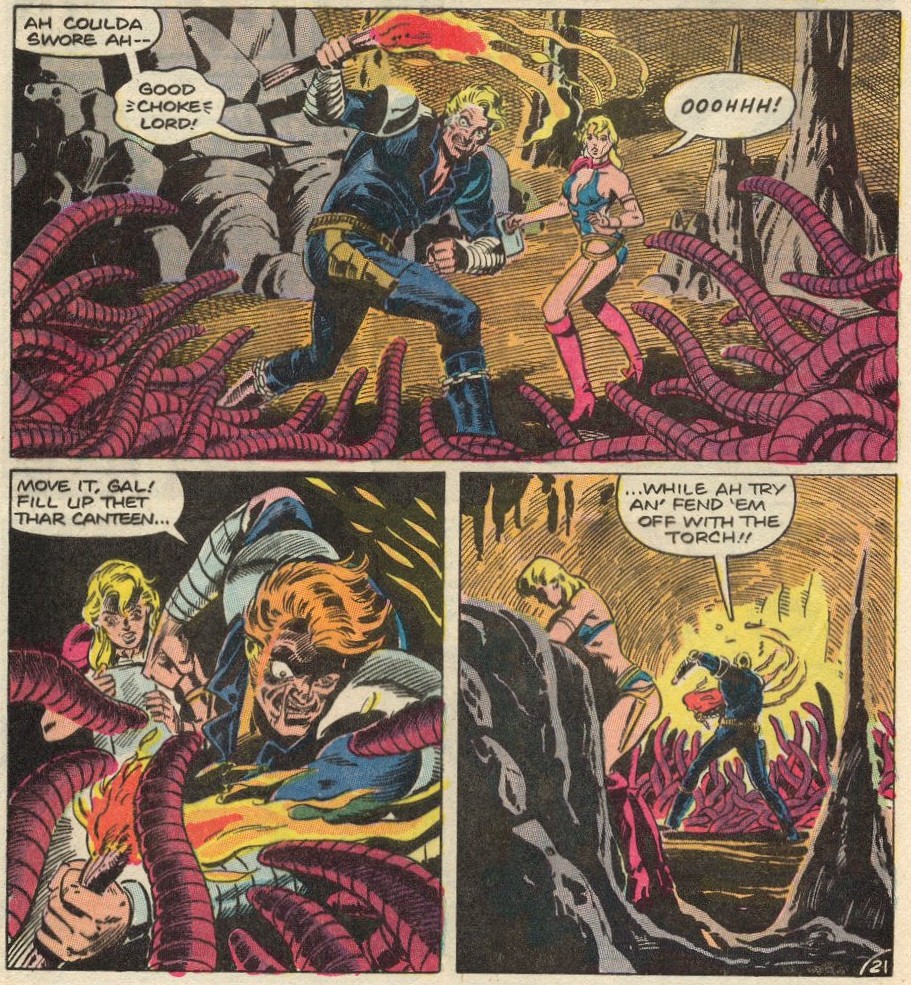
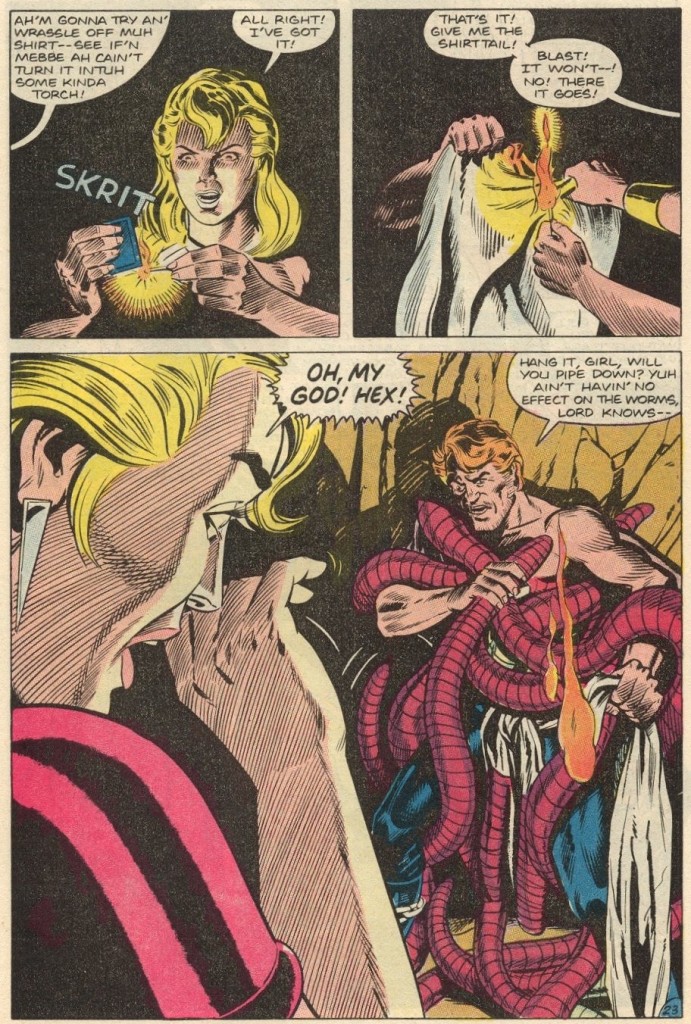
Moving on! With a texture distinctly reminiscent of some sort of slug, the following whatchamacallits could be either… but the planet that hungers is using its tentacles, and not worms, to feed. Ping! Correct. This makes the following scene no less disquieting – oh, somebody bring me back to the normal, sea-faring octopus…
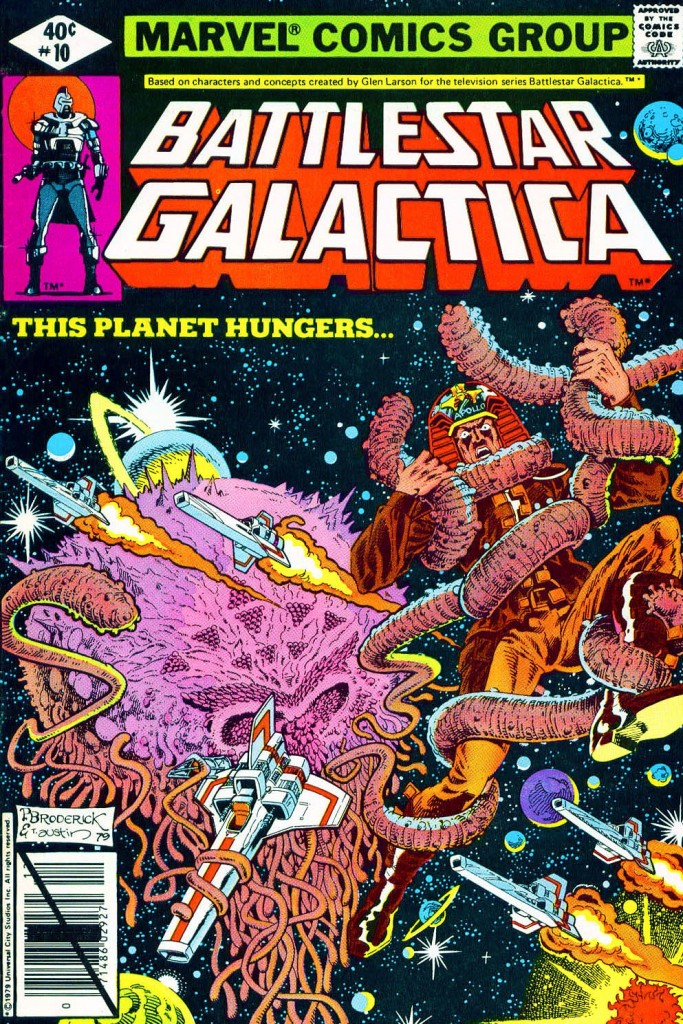
Let’s have one last go. This cover so clearly depicts Abby getting grabbed by some underwater tentacled monster, that it regularly appears in tentacle-related searches…
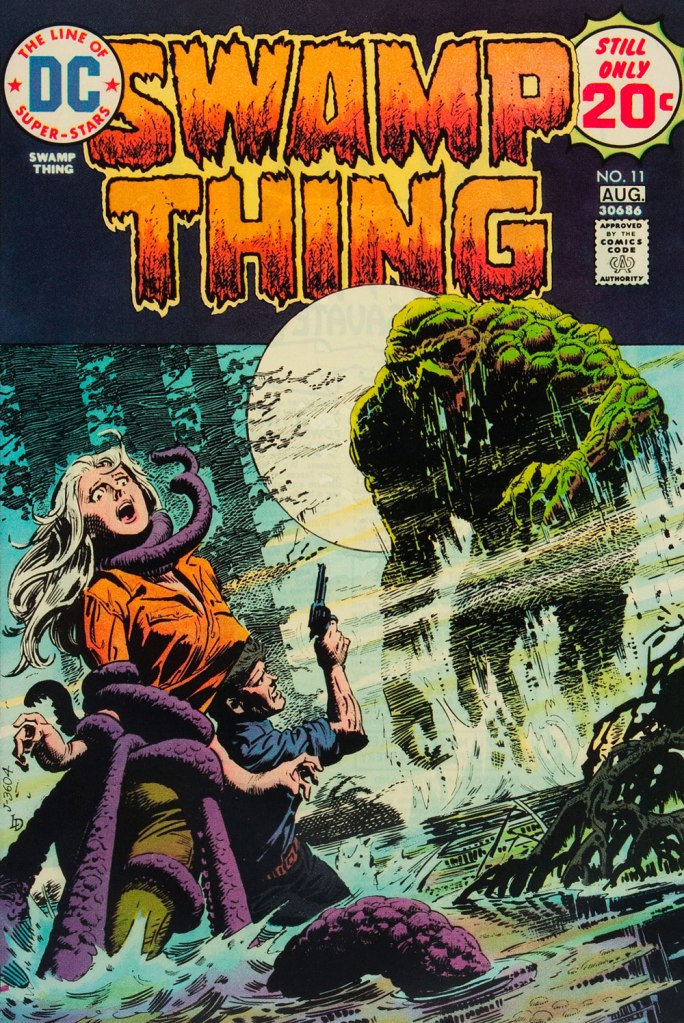
And yet! The cover is the self-explanatory The Conqueror Worms!, scripted by Len Wein and illustrated by Nestor Redondo. The star creatures of this story are actually pretty adorable, especially their mini-trunks and moist, sensitive eyes:
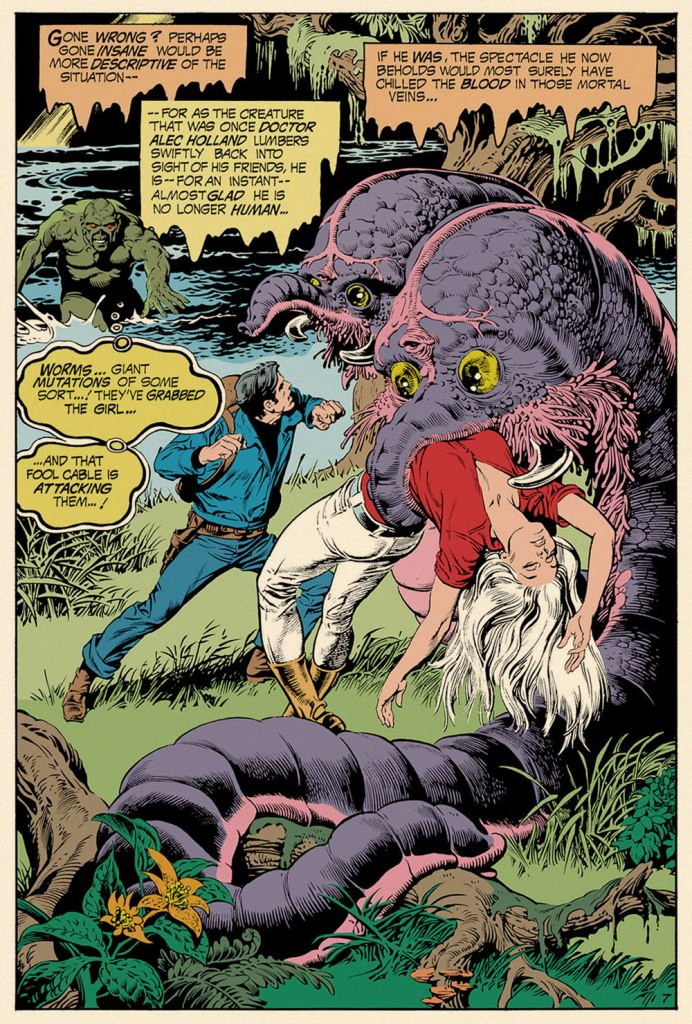
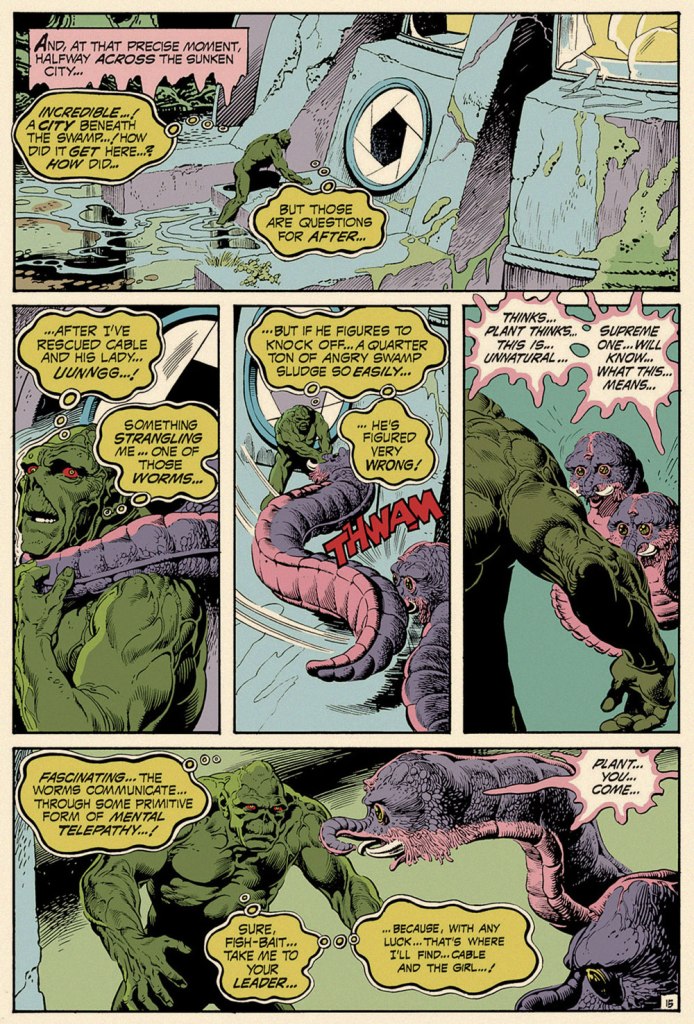
I hope some of these examples gave you pause, even if for just a little bit!
~ ds










